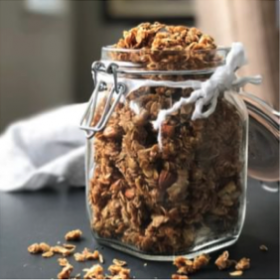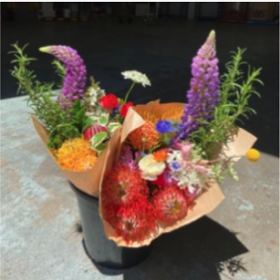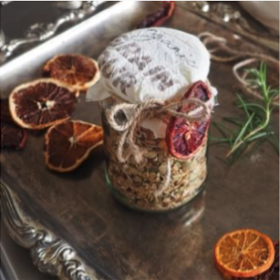Over the years Jenny and Steve’s farming has evolved into a tree centred low intervention approach. When they first took on the farm they pruned heavily each year to encourage nut production but with phytophthora, a fungal disease, killing trees they chose to reduce pruning and accept lower yields in exchange for a healthier orchard. Steve adds that other challenges for the chestnut farmer are parrots who love to take a little bite out of many nuts and the inevitable sore back during harvest time.
Jenny and Steve dropped almost 300kg of their chestnuts at CERES this week, we’re putting them in some of our set boxes as well as the webshop. When I asked Jenny how they get their nuts out of the prickly cases she replies, very carefully and with two pairs of gloves.
Jenny says the spines have a habit of breaking off leaving your fingers like infected pin cushions. She points out that if you go to their local pub during picking season you’ll notice people casually picking out chestnut spines from their fingertips in between enjoying a drink.
Jenny and Steve have around 120 mainly red spanish and purtons pride chestnut trees on their Stanley farm near Beechworth. Their oldest trees, which are about 30 years old now, were planted by the previous farmer who wanted to diversify his apple crop. They have since planted more trees and are now in the process of grafting their new favourite di coppi variety onto some of their existing stock.Jenny says the best way to cook chestnuts is to cut a small slit in the shell, boil them for about 3 minutes then scoop out the flesh to either eat straight, make a soup or stir through roast vegetables. The big red spanish nuts are hard to peel so if you want to roast yours on a fire or in the oven go for the smaller lighter purtons pride.
Fewer chestnuts has meant diversifying their farm, Jenny and Steve also grow quinces, which you may have seen recently at Fair Food. They have also recently put in beehives to harvest chestnut honey, which is beautifully dark and has a distinctive taste. We’re looking forward to getting a few jars in for Fair Food customers in the future.Chestnuts have a fascinating history in agriculture no more so than on the small Mediterranean island of Corsica where compulsory chestnut tree planting was imposed by Genoese colonial masters in the 16th century. The Corsicans eventually embraced the chestnut and the local population thrived as the growing forest produced abundant chestnut flour, timber and feed for animals. The industrial revolution, World War I and various tree diseases saw a 100 year decline of the chestnut forests but recently Corsicans have begun to re-embrace chestnut culture and more and more of the old forests are being brought back into production.



